ABOUT CITIZEN-COMMISSIONED ART
For a long time, only a privileged few could commission a work of art. New Patrons is an innovative model for citizen-commissioned art that enables everyone to do so. Civic groups take the initiative as New Patrons and initiate non-profit, public art projects. They commission international artists from all disciplines, such as Sasha Waltz, Simon Denny, or Rimini Protokoll, to lend visibility to their pressing concerns through artistic works. In this way, new perspectives and dynamics are created where something is supposed to move, where the unspoken demands expression, where desires are looking for a form.
The New Patrons groups are accompanied by mediators with experience and practical know-how in dealing with the contemporary arts. They implement the model throughout Germany with partners from culture and politics as well as public and private supporters and adapt it to local needs. In doing so, they are in exchange with associates in Europe who have already accompanied a total of more than 500 civic commissions.
Who we are
In Germany, citizen-commissioned art following the New Patrons model is represented by the Gesellschaft der Neuen Auftraggeber gGmbH (Society of the New Patrons) and the Gesellschaft für Kunst und Mediation im Bürgerauftrag e. V. (Society for art and mediation commissioned by citizens). Both organizations work closely together and are part of a broad international network.
As a non-profit limited company, the Gesellschaft der Neuen Auftraggeber advises and supports municipalities, cultural institutions, districts and anyone interested in implementing the New Patrons model in their region. It also sets up its own programs and manages supraregional tasks and partnerships. The Gesellschaft für Kunst und Mediation im Bürgerauftrag e.V. represents the interests of mediators working in Germany. The association trains and ensures the quality of mediation.
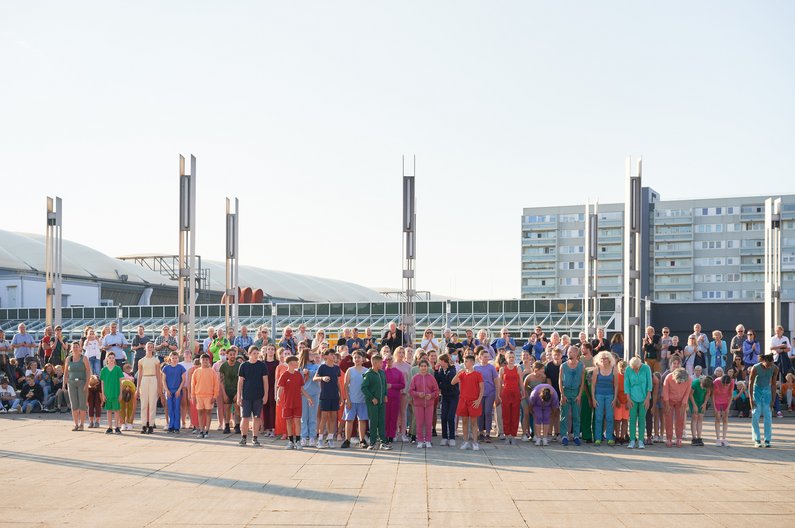
The New Patrons of Marl
Performance of the work In C - Marler Partitur by Sasha Waltz for the New Patrons of Marl, Marl, September 14, 2022. Photo: Florian Wagner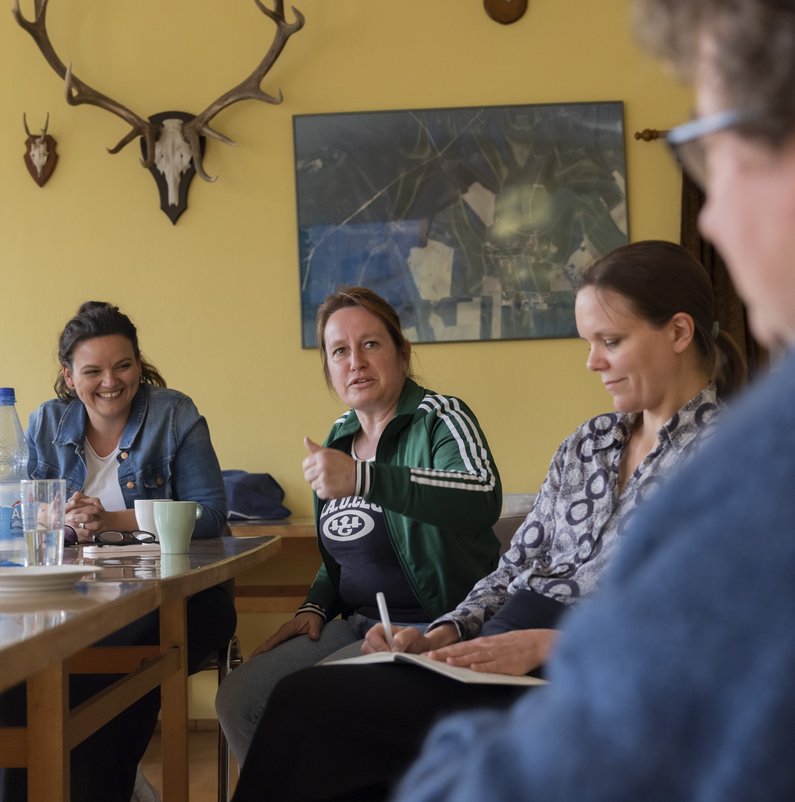
The New Patrons of Sauen
From left to right: Two Patrons in conversation with mediator Lea Schleiffenbaum and artist Judith Hopf in Sauen, 2023. Photo: Victoria Tomaschko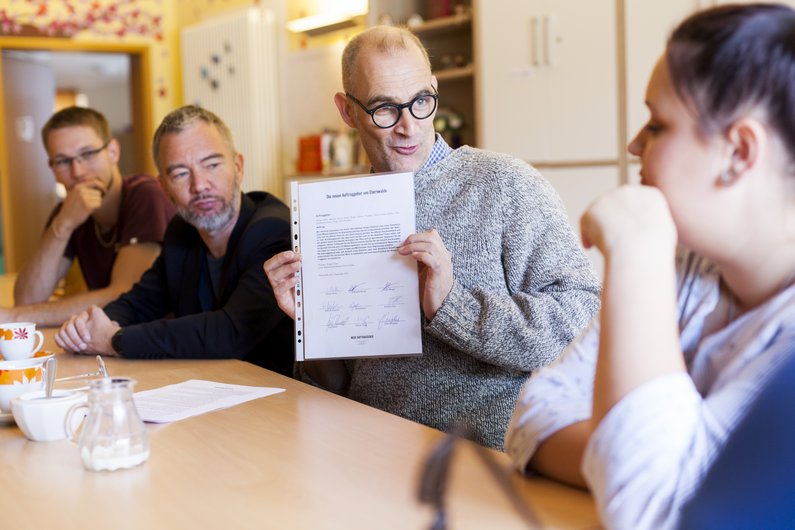
The New Patrons of Eberswalde
Mediator Holger Friese and head of regional development of the pilot phase Gerrit Gohlke with the Patrons at the signing of the contract, Eberswalde, 2019. Photo: Victoria Tomaschko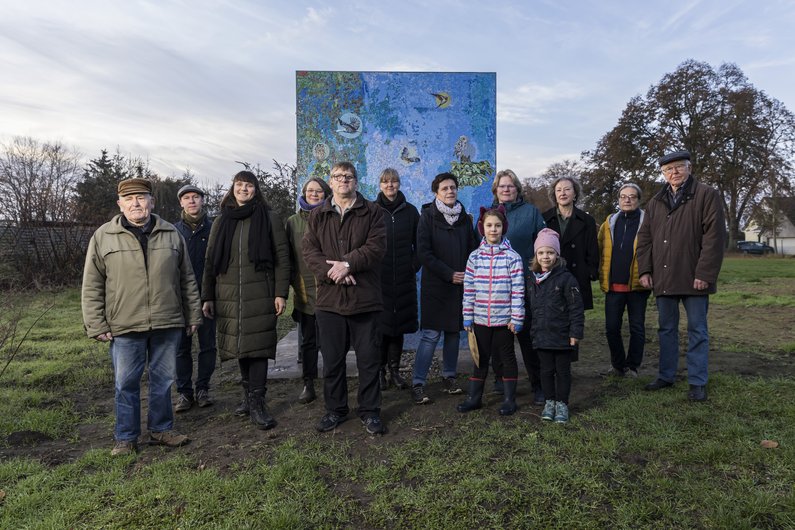
The New Patrons of Wietstock
The Patrons with artist Antje Majewski (4th from left) and mediator Susanne Burmester (3rd from right) at the inauguration of Antje Majewski's mosaic in Wietstock, 2022. Photo: Victoria TomaschkoHow it works
As patrons, the citizens involved in the projects make all the key decisions. In this way, they bear responsibility for their project and act in a self-determined manner in the social situation in which they find themselves.
A commission is usually prompted by urgent concerns. Initially, these do not have to have anything to do with art. It can be about problems in social communities, smoldering conflicts, lack of visibility of relevant issues, or the desire for new places to meet. Perhaps a piece of history is to be told in a new and different way, a person is to be honored, a climate-friendly life is to be promoted, or a social utopia is to be formulated. Sometimes there are very small, sometimes large issues that start a commission.
Usually, a small group of people enters into an exchange with the mediator of a region and presents their concerns. The mediator then helps formulate the civic concern as a commission and consider important questions; such as who else might be involved in the project, what goals seem realistic, what artistic forms might be considered. Once the brief is clear, the mediator proposes an artist who fits the commission and its patrons.
As a next step, the artist is commissioned by the New Patrons group to develop an artistic concept. The dialogue with the group is moderated by the mediator. If the concept convinces the commissioning group, the planning for the production of the work begins. If the concept is not convincing, it is revised.
Before production begins, other actors are usually approached. These can be the neighborhood, the press or the mayor. They are involved in the project at an early stage and promote its implementation. Depending on the project, funds may have to be found for the production. This is also the task of the mediators. Often, local institutions such as associations or administrations play a supporting role in the implementation.
The New Patrons group closely accompanies the production process in all phases. Once production is complete and the work of art is finished, it is publicly inaugurated, premiered or taken ownership of. In the process, the civic patron groups become the main protagonists, visible from afar. After all, it is their project that now becomes public. In the course of the project, they have become experts on their work of art, because they have accompanied every step of its conception and creation. They pass on their knowledge to the local community. Often, a strong sense of identification with the work and with what they have accomplished together emerges. The experience of their own self-efficacy sustainably strengthens the patrons' self-image and also their future commitment.
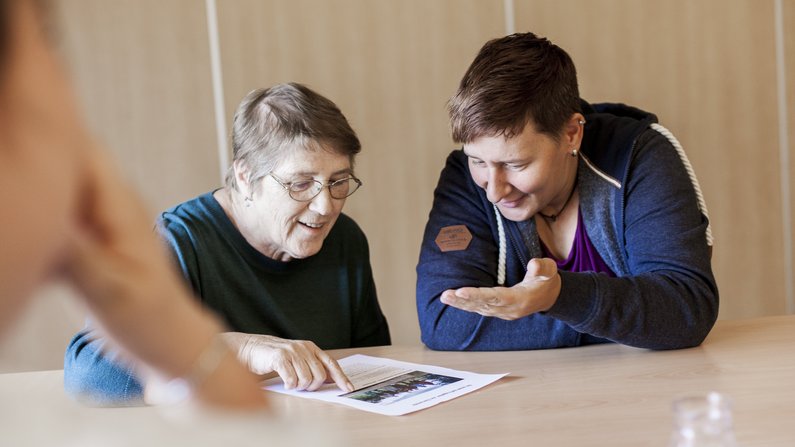
The New Patrons of Eberswalde
Two members of the Patrons group discuss the commission, Eberswalde, 2019. Photo: Victoria Tomaschko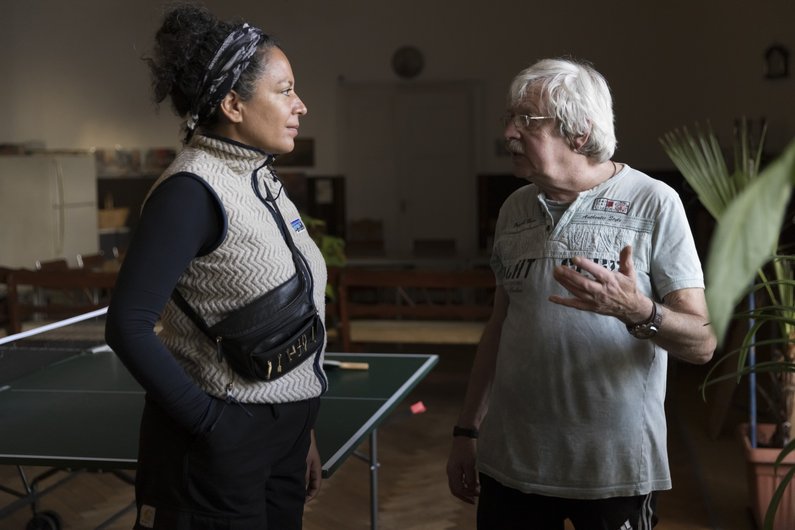
The New Patrons of Friedland
Artist Mariana Castillo Deball talking to a bar owner in Friedland, 2022.Photo: Victoria Tomaschko
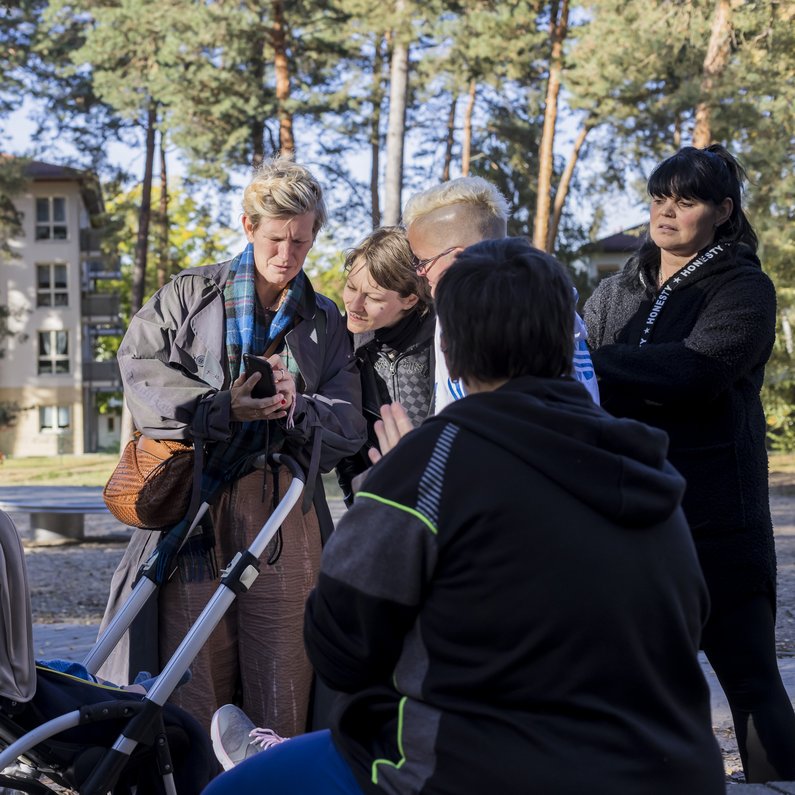
The New Patrons of Eberswalde
Visit of the artist Laure Prouvost in Eberswalde, 2021. Photo: Victoria Tomaschko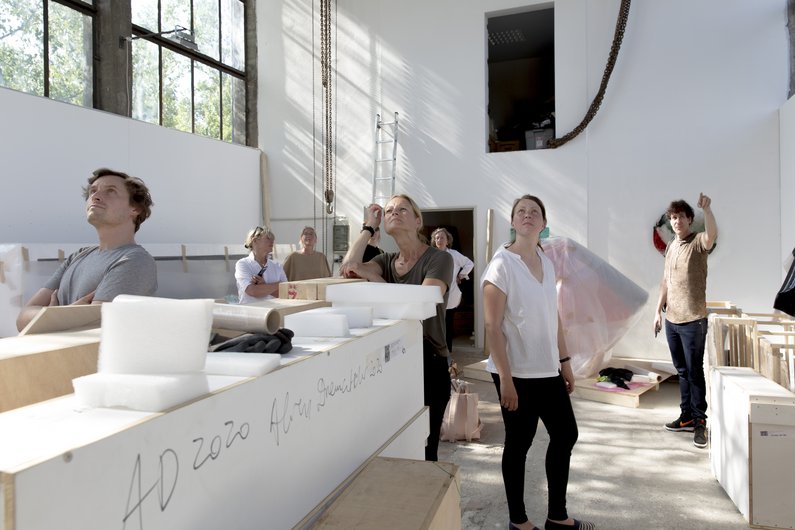
The New Patrons of Greifswald
The Patrons visiting the studio of artist Daniel Knorr, Berlin, 2021. Photo: Victoria TomaschkoWho can do it
Municipalities, institutions or funders who want to facilitate commissioning and mediation processes will find the right contact in the Gesellschaft der Neuen Auftraggeber. Neue Auftraggeber is a network of organizations and individuals in Germany that implement the model of art and mediation commissioned by citizens. The office connects interested parties with the appropriate actors from this network so that they can implement it in cooperation or on their own.
Citizens who want to become New Patrons themselves and start a project can contact the mediators in their region or the Gesellschaft der Neuen Auftraggeber in Berlin.
Anyone wishing to become active as a mediator in the New Patrons model can contact the Gesellschaft für Kunst und Mediation im Bürgerauftrag e. V., which, as a mediator network in Germany, supervises training and further education in a peer-to-peer process.
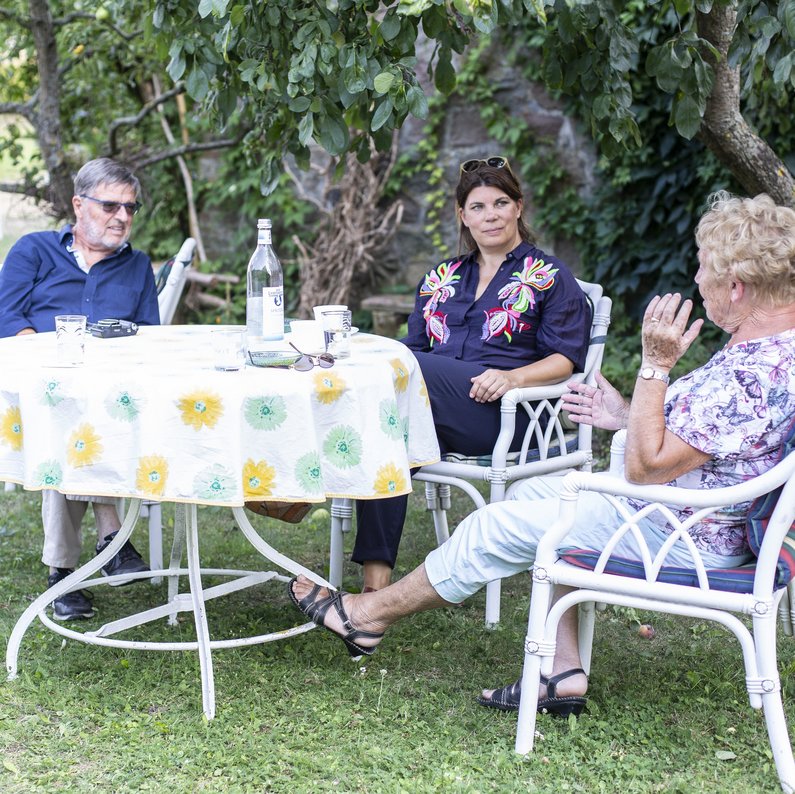
The New Patrons of Steinhöfel
Helgard Haug of Rimini Protokoll (center) with guests at the village recipes celebration in Steinhöfel, 2020. Photo: Victoria Tomaschko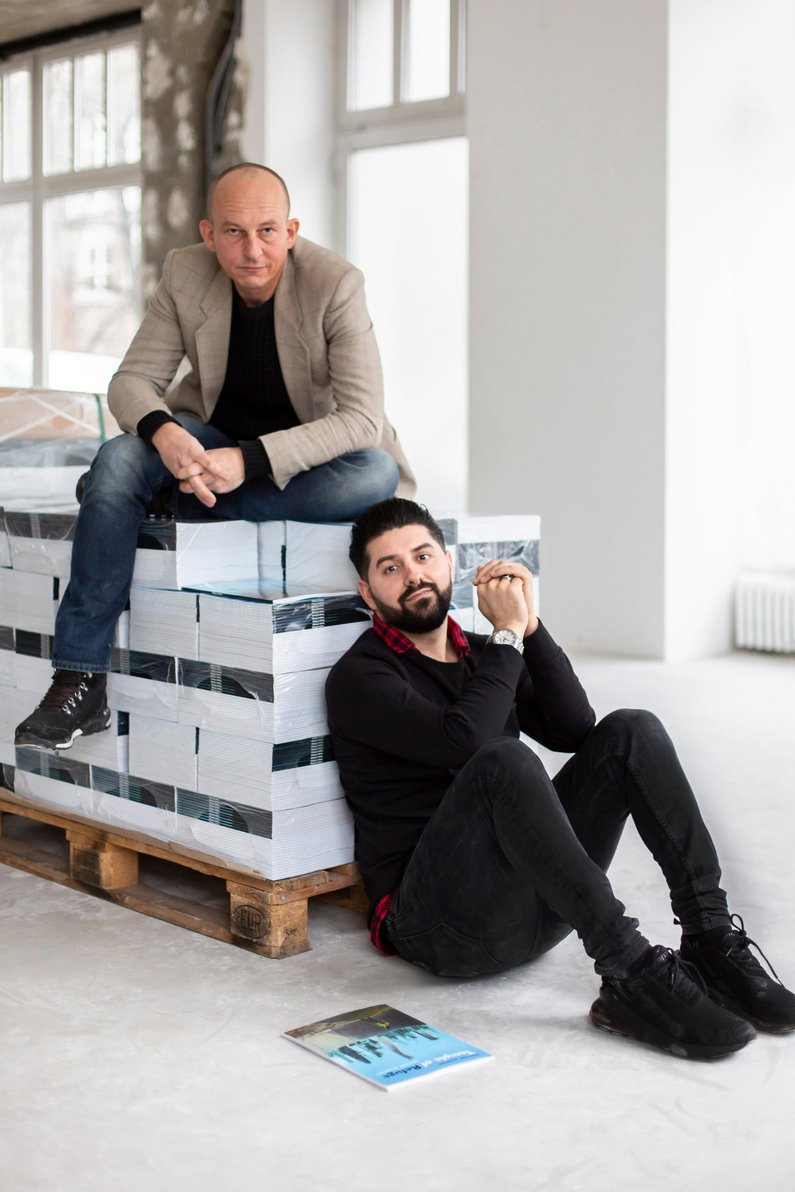
The New Patrons of Tempelhof
Mediator Alexander Koch and Patron Sartep Namiq with a palette of his commissioned comic books Temple of Refuge, Berlin, 2021. Photo: Victoria Tomaschko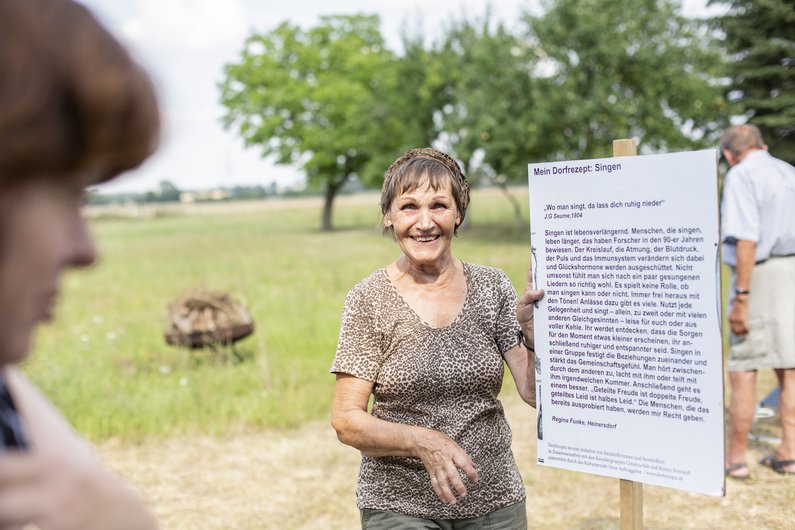
The New Patrons of Steinhöfel
Patron Regina Funke at the presentation of the village recipes in Steinhöfel, 2020. Photo: Victoria TomaschkoWhat it does
Citizen-commissioned art enables more people to have a say in shaping their social environment. The arts gain new relevance and new opportunities for action as cultural practitioners collaborate with civic initiatives. Local issues and needs are negotiated together through ambitious art projects.
The New Patrons model strengthens democratic action and engagement, as well as social cohesion. It mobilizes transformation processes on the ground and contributes to the provision of public services, local resilience and the creation of equal living conditions. It makes crises and conflicts negotiable and, in the process, allows voices to be heard that may not yet have been heard. People who have experienced it often report it.
For the arts, the New Patrons offer an opportunity to apply one's artistic practice outside of familiar and customary spaces of action, using one's own artistic thinking and action to address concrete civil society concerns and to respond directly to civic needs.
A practice as mediator offers people from art education a challenging, well-tested and experimentally wide-open model of action with an innovative unique selling point: civic interests and civic ownership are the starting point and central instance for the production of public cultural goods.
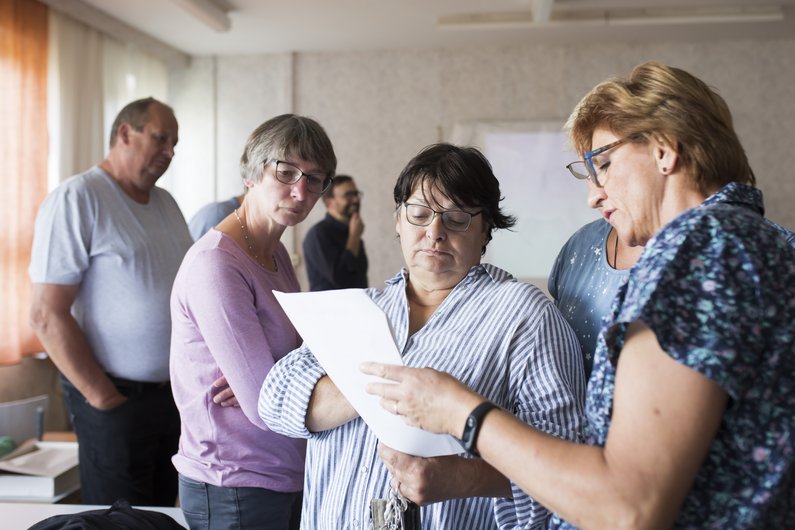
The New Patrons of Züsedom
The commissioning group discusses Jakub Szczęsny's design, Züsedom, 2020. Photo: Victoria Tomaschko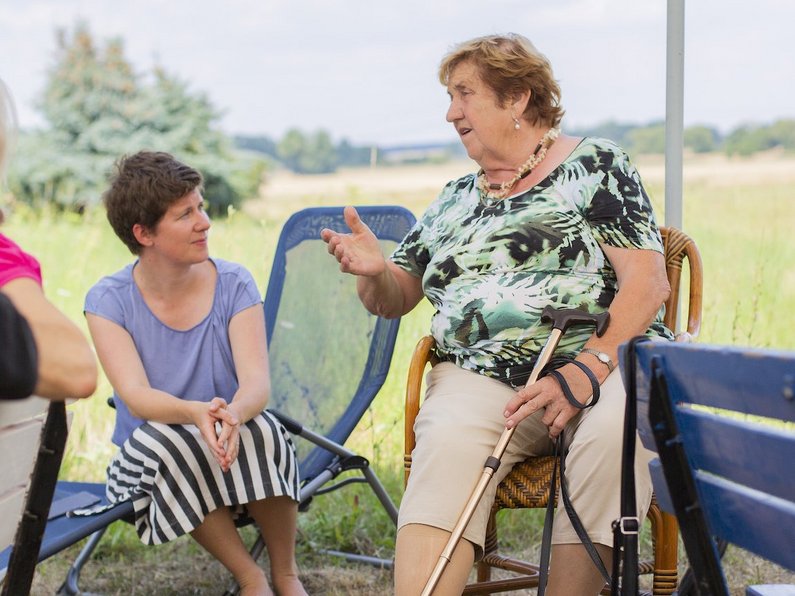
The New Patrons of Steinhöfel
Mediator Sophia Trollmann in conversation with Renate Kliems, chairwoman of the seniors' advisory council, at the village recipes celebration in Steinhöfel, 2020. Photo: Victoria TomaschkoWhat it needs
Art commissioned by citizens in the New Patrons model needs strong partners and supporters. The mediation of civic commissioning projects and their artistic realization must be financed. The committed initiatives of citizens need backing and political support in municipalities, in the federal states and in the federal government. But the projects also need to be analyzed and evaluated from an academic point of view in order to place them in a larger, complex context and to make their effectiveness and sustainability understandable.